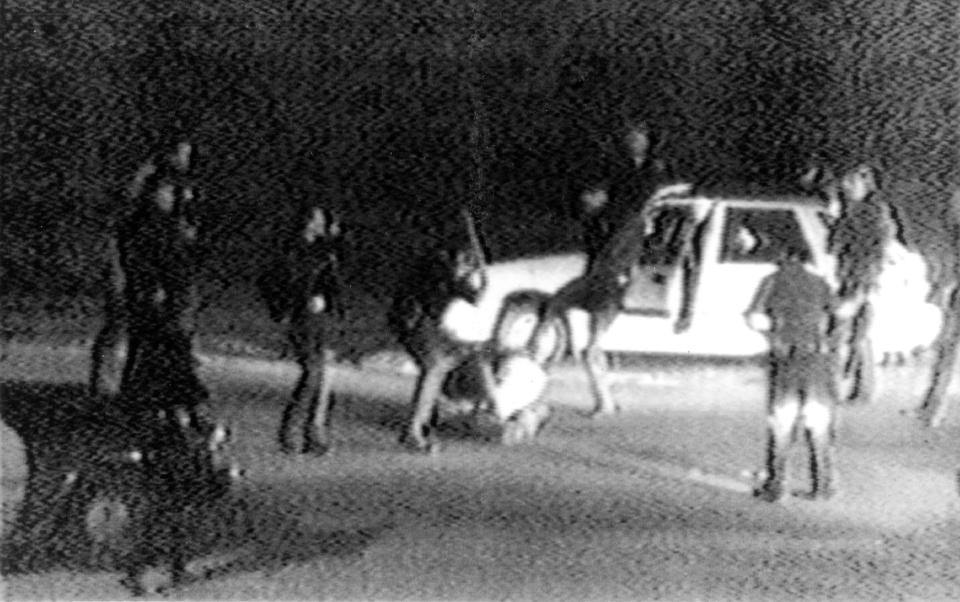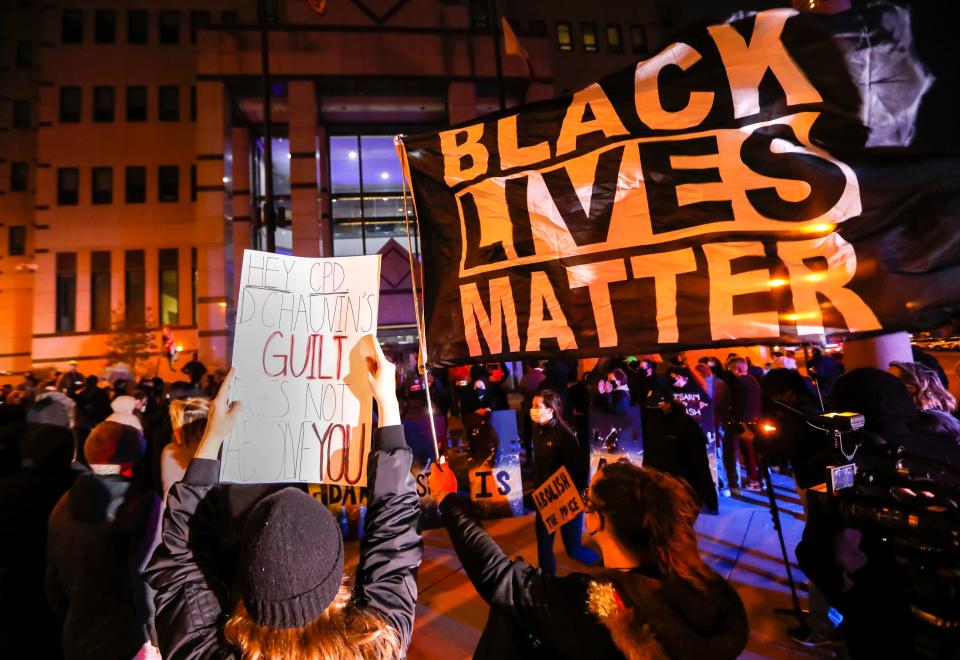Black lives still don't matter in America 30 years after Los Angeles burned, |Jeffries
- Oops!Something went wrong.Please try again later.
Thirty years ago this week, the City of Angels saturated the news cycle as thousands of residents rose up in protest to the acquittal of the four police officers who savagely and brutally beat Rodney King, a 25-year-old Black man who led them on a high-speed chase.
The video of the beating went worldwide. The officers delivered nearly 60 blows with their batons, resulting in broken bones, cuts and lacerations as well as nerve damage. From Wednesday, April 29 to Monday, May 4, 1992, the world witnessed a level of discontent, dismay and destruction in an American city not seen since the turbulent 1960s.
Opinion: It’s time for communities, businesses to start listening and get off the sidelines
Hundreds of fires were set, buildings vandalized, and property destroyed, totaling close to $1 billion in damages. More than 60 lives were lost over the course of several days.

To this day many people, academics included, attribute the uprising (not a riot) to the beating of Rodney King. If only it were that simple. Sure, the upheaval followed, in short order, the acquittal of the four officers referenced above, but there was more to that story.
Other factors that merit accounting for include severe segregation which is an undeniable part of the city’s fabric, depressingly high rates of Black and brown unemployment, inhumane levels of poverty, overcrowding in public schools, and substandard healthcare facilities, to name a few.
And let’s not forget the senseless murder of 15-year-old Latasha Harlins the year before by Soon Ja Du, a merchant who shot the teenager in the back of the head as she was walking out of the store. Despite having the money in hand, Ja Du believed Harlins was trying to steal a bottle of orange juice worth all of $1.79.
To add insult to injury, Judge Joyce Karlin sentenced Harlins’ murderer to 400 hours of community service, a $500 fine, and ordered her to pay for Harlins’ funeral. The following year, on April 21, 1992, a state appeals court inexplicably upheld Judge Karlin’s sentencing decision. Eight days later, Los Angeles was ablaze.
What’s changed since then?
Nearly every major city where an uprising has occurred in the past 30 years has been saddled with many of the issues that plagued LA in 1992.
Capitol Insider: Study: Ohio lags on almost all measures of racial progress

Moreover, it was believed that the video of the King beating might prompt police officers to be mindful of how they interact with motorists and pedestrians, that they might be less likely to engage in extra-legal force if the possibility of being recorded exists?

While on the surface, this makes sense, there is no evidence to suggest that the presence of video recorders in an era, mind you, where everyone has one in their hand or on their person at all times, are a deterrent to those officers who demonstrate a proclivity for shooting to death unarmed Black people.
Study: Columbus police used force disproportionately against Black residents
Black people talk about safe spaces, meaning spaces where people can feel confident that they will not be subjected to discrimination, harassment or undue duress. Does such a place exist for Black people? Perhaps on Darryl Dawkins’ Planet Lovetron.
The fact of the matter is, Black folks can’t go for a stroll in their own neighborhood, toil about in their own garage, exercise in the park or enjoy an ice cream in the privacy of their own home without being shot to death by some seemingly deranged person.
Pastor: Police believe Black people are 'the enemy' due to 'warrior mindset'
So, what’s changed since LA ‘92?
Not a heck of a whole lot as far as I’m concerned. For many people, Black lives didn’t matter then, and they don’t matter now.
Judson L. Jeffries is professor of African American and African Studies at The Ohio State University. He is a frequent contributor.
This article originally appeared on The Columbus Dispatch: Jeffries: Thirty years after Los Angeles riots, not much has changed

